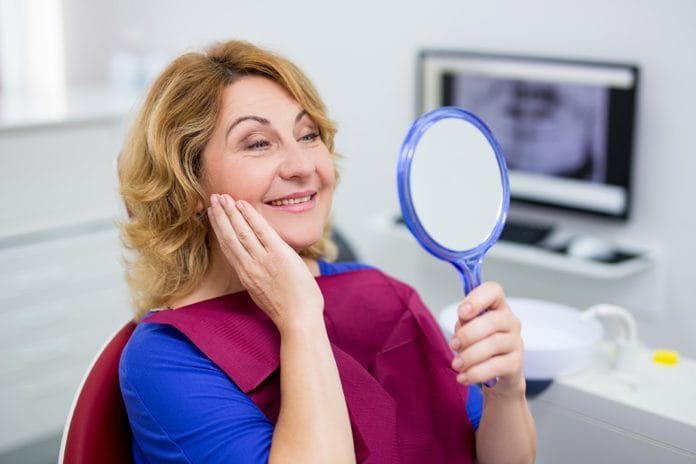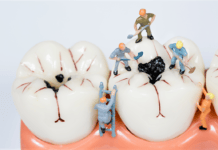We all chose dentistry for different reasons. Our technical skills were developed and nurtured throughout college, but communication skills were never a clear focus in our curriculum, as far as I could tell. I think there is always the assumption that we had already developed great “people skills” by the time we entered college.
After graduation, many clinicians realize that the skills needed to develop good relationships with our patients, co-workers, and employers may need some tweaking. I remember a billion years ago when I ran into a hygienist who loved the work but did not like the exhausting interpersonal relationship skills necessary to interact with her patients and subsequently left the profession.
I have also watched case presentations die in a fiery crash due to an underdeveloped capacity for interaction. As one group of researchers put it, “Communication skills training is internationally accepted as an essential component of medical education.”1 I am one of the first to argue that we are indeed health-care providers, and our standards are no less than traditional medical providers. It has been found that clinicians who participated in communication training have found their skills improved dramatically in talking with, assessing, and building relationships with their patients.
Interpersonal communication skills are considered so vital that they are a core competency identified by the Accreditation Council on Graduate Medical Education and the American Board of Medical Specialties. Effective communication has useful benefits in preventing medical or dental errors, improving treatment outcomes, strengthening patient-practitioner relationships, and making more efficient use of interaction time.2
What Older Patients Expect
In 2017, the Centers for Disease Control and Prevention shared data that 65.6% of adults over 65 had had a dental visit in the past year. In 2016, the number of people over 65 was 49.2 million. By 2030, all baby boomers will be 65 years old or older and make up a fifth of the total population.
I don’t think we realize some of the intricacies of working with these remarkable generations. Many of us need to ramp up our communication skills for this demographic of patients. I have found some key things to watch for as we venture back to our practices.
- It starts at the front door. First and foremost, respectfully address the person with their formal name. Mr., Mrs., Ms., and avoid terms such as “dear” and “hon” that can sound patronizing. Escort older patients to and from operatories, the front desk, and restrooms, and check on them if there are long wait times.
- Do not rush. Older people may find it difficult to follow a rapid-fire barrage of questions. Speak more slowly, but still respectfully. It gives them time to process and avoids hurrying the patient for their answers. You will also have more time to gather important information that may lead to better cooperation and treatment adherence and acceptance. Rushing anyone can lead that person to the impression that they are not being heard or understood. Seniors are often already worried that they may be taking too much of your time.
- Avoid interrupting. In the medical setting, doctors, on average, only spend 11 seconds listening to patients before interrupting them.4 Are we in dentistry guilty of this? Be on point with your listening skills. Eye contact can go a long way and use brief responses, such as “yes,” “I see,” and “OK.” Face the patient as they are talking; don’t turn your back or, worse, stay behind your chair doing other things while they are communicating their concerns or needs.
Empathy is key to patient satisfaction, understanding, and adherence and acceptance to treatment. A person-focused dental hygienist will be found more approachable and patient-centric, which is a win in all areas of a successful practice.3 An empathetic staff could increase patient referrals, patient retention, treatment acceptance, and procedure satisfaction.
Empathy can be explained as an ability to imagine what the other person’s life is like and shows an element of dignity for the patient. Without empathy, the relationship is balanced heavily on only one side.
Be careful when speaking in dental lingo. Mesial, distal, endo, and apex are not used in the lay people’s world. You can also write things down to spell certain things, draw pictures, or even confirm a diagnosis. Try to make the notes simple and clear, with no room for interpretation.
Make an effort to let them know you understand how the subject at hand could be difficult to comprehend. “I know this is complex. I’ll do my best to explain, but let me know if you have any questions or want me to go over it again.”
Addressing the Impairments
Hearing is a huge problem. Age-related hearing loss occurs in about one-quarter of people between the ages of 65-75, and half of those over 75 have disabling hearing loss. If your patient is at a deficit, speak slowly and clearly in a normal tone. Don’t use a high-pitched voice, which is even harder to hear.
Shouting or speaking in a raised voice actually distorts language sounds and can give the impression of anger. Again, focus on speaking face to face at eye level, so perhaps he or she can read your lips or pick up visual clues. And for the love of Pete, take your mask off! In our new COVID world, this may be difficult, but it is important to make adjustments. You can also make environmental improvements such as listening for background noises such as computers, suctions, or drills. A good, properly positioned light can help with our patients seeing speech and signs. Friendly facial expressions and gestures can go a long way.
A helpful tool to use if your patient has difficulty with letters or numbers is to give them context such as “m as in Mary” or “two as in twins.” Letters that sound alike, such as m and n and b, c, d, e, t, and v can be quite tricky. This is a great time to pull out a note pad to write down important things.
Tell the patient if you are changing the subject. Take a breath or a pause, and perhaps gently touch the patient or ask a question. We have many patients who choose not to wear their hearing devices to our office because of our handpieces, ultrasonic scalers, and polishers. Or, they may not admit they even have a hearing problem. Always be assessing your patient’s needs.
If there is anything you are to show them that is written, offer ahead to help them get their glasses. I, for one, sometimes forget my reading glasses, and it would be great at an office to have a few around in case of emergency. Lastly, as a person who wears “cheaters,” watch the font size on all printed material, especially if you are talking numbers. No one should have to ask what the dollar amount is on a treatment plan.
My absolute favorite patients have always been the older crowd. I learn so much from them and feel like I contribute more to their health and well-being than others. As my years tick by and I am fast approaching that “crowd” in age, I hope that my health-care providers will consider a few of these tips when speaking to me.
More information about effective communication with seniors, please visit:
Now Listen to the Today’s RDH Dental Hygiene Podcast Below:
References
- Ferreira-Padilla, G., Ferrández-Antón, T., Baleriola-Júlvez, J., Braš, M., Đorđević, V. Communication skills in medicine: where do we come from and where are we going? Croat Med J. 2015; 56(3): 311‐314. doi:10.3325/cmj.2015.56.311. Retreived from https://www.ncbi.nlm.nih.gov/pmc/articles/PMC4500973/.
- Tips for Improving Communication with Older Patients. National Institute on Aging. May 17, 2017. Retrieved from https://www.nia.nih.gov/health/tips-improving-communication-older-patients
- Singh, O.N., Phillips, K.A., Rodriguez-Gutierrez, R. et al.Eliciting the Patient’s Agenda- Secondary Analysis of Recorded Clinical Encounters. J Gen Intern Med. 2019; 34:36–40. Retrieved from https://doi.org/10.1007/s11606-018-4540-5.
- Flocke, S.A., Miller, W.L., Crabtree, B.F. Relationships between physician practice style, patient satisfaction, and attributes of primary care. J Fam Pract. 2002 Oct; 51(10): 835-40. Retrieved from https://www.ncbi.nlm.nih.gov/pubmed/12401151.












